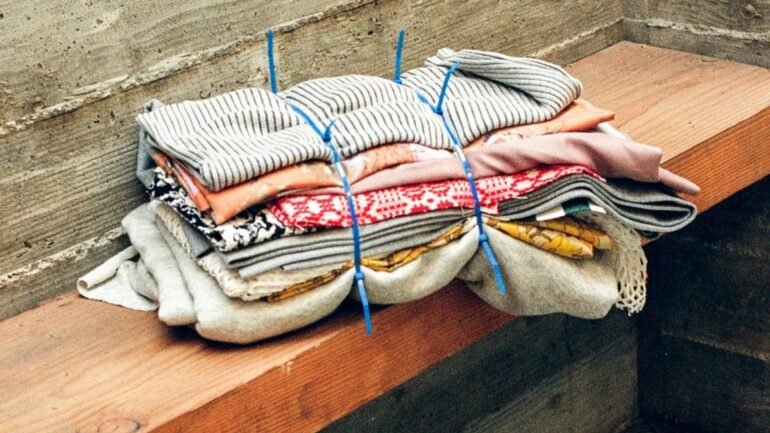Become a Vogue Business Member to receive unlimited access to Member-only reporting and insights, our Beauty and TikTok Trend Trackers, Member-only newsletters and exclusive event invitations.
At first glance, fashion brands working with deadstock materials is a rare win-win for both the planet and the industry’s profit margins. When deadstock — or unsellable inventory — is repurposed, it stops the environmental damage used to produce those materials from going to waste, and in an ideal world, also displaces virgin materials. On the financial side, brands are able to recoup some of their losses from overproduction and avoid sending expensive materials to landfill or incineration.
But criticism of deadstock has been mounting in recent years. The term has been overused and misinterpreted, referencing everything from industrial waste to unsold products, with little transparency over when, where or how it was produced. There is also a debate around how long materials need to be sat unused before being considered deadstock, when in the production journey those materials ought to be intercepted, and to what degree using deadstock can be marketed as a sustainability play. All of this has left the sector susceptible to greenwashing.
A big part of the problem is that deadstock doesn’t have an official definition, says Stephanie Benedetto, co-founder and CEO of inventory management platform Aloqia (formerly deadstock marketplace Queen of Raw). On 5 September, Aloqia is launching a new platform called the “Foundstock Standard” in an attempt to establish a consensus on what exactly deadstock is, and incentivise its reuse. Central to its work is reframing waste as a resource, rather than “dead”.
Aloqia’s proposed definition of “foundstock” is currently a 20-page working document — available in full on the standard’s new website — which will be reviewed and updated by its advisory board and independent auditing partners over the next six months. However, at its core, foundstock is defined as unused, pre-consumer textile materials such as yarns, fabric rolls or raw goods that were produced but never used, shipped or sold. This also includes unfinished items that were developed for a specific purpose, but were set aside or discarded before fulfilling that purpose, and have been held in storage for at least 90 days.
Depending on the level of traceability and the documentation provided alongside deadstock materials, brands using the standard will be awarded silver, gold or platinum status. Crucially, certified foundstock can only be sold at the same price or lower, to avoid incentivising brands to produce deadstock for profit.
